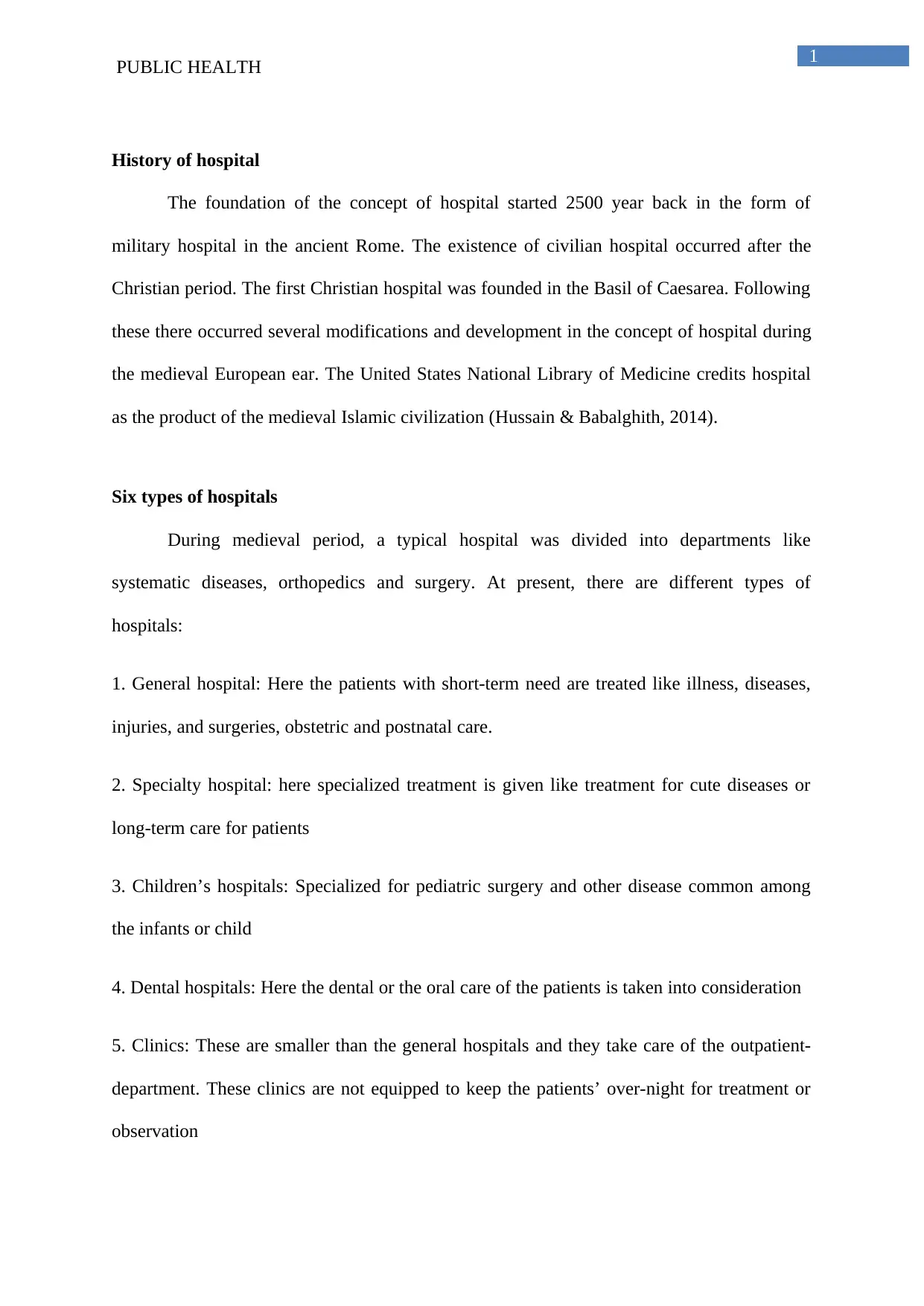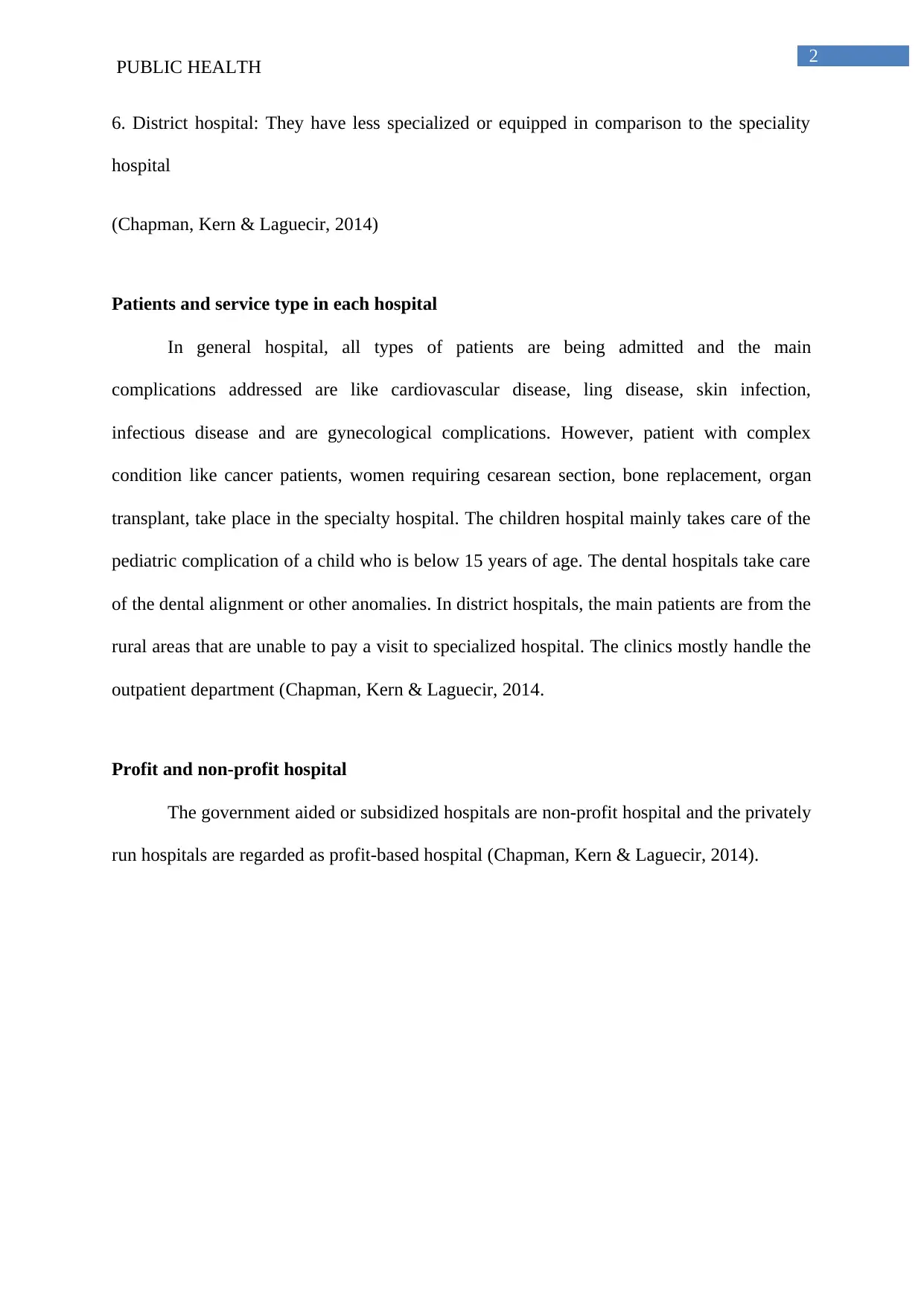Public Health Assignment: Hospital Types, Patient Care, and History
VerifiedAdded on 2022/10/19
|4
|547
|37
Report
AI Summary
This report delves into the realm of public health, focusing on the historical development and categorization of hospitals. Beginning with the ancient roots in military hospitals, the report traces the evolution through the medieval period and into modern times. It identifies and describes various types of hospitals, including general hospitals, specialty hospitals, children's hospitals, dental hospitals, clinics, and district hospitals, highlighting the specific patient populations and services each provides. Furthermore, the report distinguishes between profit and non-profit hospitals, providing a comprehensive overview of the healthcare landscape. The report makes references to the provided sources to support the information.
1 out of 4









![[object Object]](/_next/static/media/star-bottom.7253800d.svg)